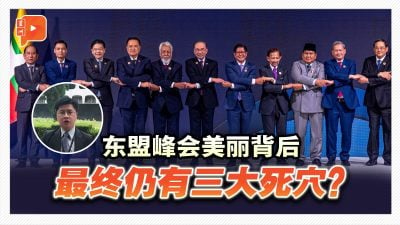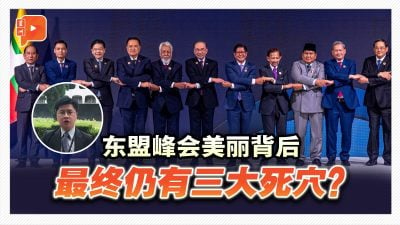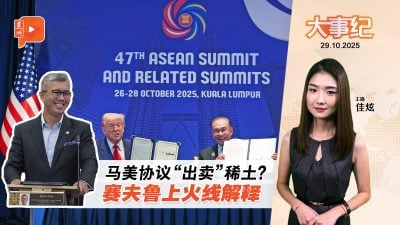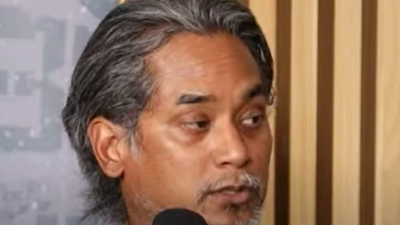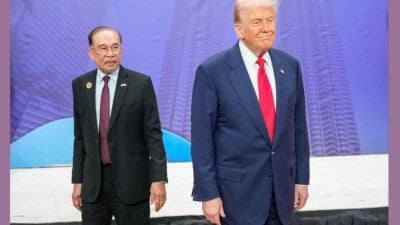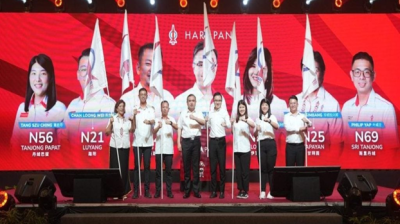
As ASEAN charts its course toward 2045, the region faces a profound question: Can it remain cohesive, credible, and competitive without including its immediate neighbors, Timor-Leste and Papua New Guinea (PNG)?
The recent show of support from Indonesian President Prabowo Subianto for both countries’ future membership is more than symbolic.
It represents a bold recalibration of ASEAN’s strategic imagination—one that the bloc should embrace with both pragmatism and vision.
Timor-Leste: Completing the Southeast Asian family
Since gaining independence in 2002, Timor-Leste has sought ASEAN membership with patience and resolve.
Official observer status was granted in 2022, and all signs point to full admission by 2025.
Some critics question whether a small country of 1.3 million, still grappling with poverty and infrastructure deficits, adds tangible strength to ASEAN. But this perspective misses the point.
Timor-Leste is ASEAN’s unfinished business. It is geographically Southeast Asian, historically entwined with Indonesia, and culturally aligned with the regional community’s norms of non-interference, consensus, and peaceful coexistence.
It has attended ASEAN meetings regularly and even adopted the ASEAN Charter as part of its foreign policy doctrine.
Indonesia’s support—especially meaningful given the painful past between the two nations—is a regional endorsement of reconciliation and resilience.
In embracing Timor-Leste, ASEAN does not just gain a member; it reaffirms its core identity as a regional family that leaves no one behind.
Papua New Guinea: A Pacific power looking west
If Timor-Leste completes the ASEAN puzzle geographically, PNG offers a geopolitical extension into the Pacific—a region increasingly contested by global powers.
With vast natural resources, a young population, and strategic maritime space bordering Indonesia’s Papua region, PNG is more than a symbolic addition.
Its inclusion would mark a historic step toward anchoring ASEAN at the confluence of Asia and Oceania.
Despite being an ASEAN observer in ASEAN Regional Forum, PNG’s membership aspirations have remained tentative.
Economic gaps, governance challenges, and concerns over compatibility with ASEAN’s norms have slowed progress.
But times have changed. PNG is deepening its economic ties with Indonesia and has recently signaled greater interest in regional integration.
Prabowo’s public backing—delivered at the 2025 ASEAN Summit in Kuala Lumpur—sends a powerful message: ASEAN must think bigger and more inclusively if it is to stay relevant in an age of multipolarity.
Why expansion matters now
Timor-Leste and PNG’s potential membership is not merely a question of charity or symbolism. It is a strategic imperative grounded in five core arguments:
1. Geostrategic Buffering: Including PNG extends ASEAN’s influence into the Pacific, offering a counterweight to external powers seeking influence in the region.
It also provides a buffer zone adjacent to Indonesia’s eastern provinces.
2. Economic Diversification: Both countries, though economically behind the ASEAN-10, are resource-rich.
Strategic infrastructure investment and trade expansion could help close the development gap, especially under RCEP and the upcoming ASEAN Digital Economy Framework.
3. Institutional Legitimacy: ASEAN’s identity as a regional organization for “Southeast Asia” remains incomplete without Timor-Leste and questionable without a coherent approach to PNG.
Expanding the bloc enhances its institutional legitimacy.
4. Soft Power and Norm Building: Timor-Leste is a young democracy and a success story of post-conflict peacebuilding.
Its inclusion affirms ASEAN’s commitment to political pluralism and peace through dialogue.
5. Indonesia’s Regional Role: As the de facto leader of ASEAN, Indonesia’s backing of Timor-Leste and PNG underscores its strategic vision.
To ignore this leadership is to fragment ASEAN’s internal coherence and squander momentum.
Challenges ahead, but not insurmountable
Skeptics rightly raise issues. Both countries have weak bureaucratic capacity, struggle with corruption, and face domestic security concerns.
Integrating them would stretch ASEAN’s institutional resources and test its consensus model.
However, these are not unprecedented hurdles.
Cambodia, Laos, Myanmar, and Vietnam joined in the late 1990s with similar concerns. ASEAN adapted.
If it could assist post-conflict Cambodia and integrate authoritarian Myanmar (albeit now suspended), it can surely find pathways to assist and integrate democratic Timor-Leste and resource-rich PNG.
The key lies in a sequenced roadmap: phased integration, technical assistance, and targeted capacity-building led by ASEAN’s more advanced economies—especially Indonesia, Malaysia, and Singapore.
Both new members can be brought into ASEAN’s economic, political, and cultural architecture gradually, while observing key protocols in human rights, maritime cooperation, and environmental governance.
Toward a broader ASEAN horizon
In 2025, ASEAN will mark a pivotal crossroads.
The bloc’s internal coherence is being tested by regional divides over Myanmar, economic recovery post-Covid-19, and strategic competition between the US and China.
Adding Timor-Leste and PNG would signal that ASEAN is not paralyzed by its own complexity. It is willing to grow, evolve, and adapt.
The alternative—continued delay—sends the opposite message: that ASEAN is frozen by indecision, too cautious to lead, and too conservative to enlarge its vision.
That would be a strategic blunder, especially at a time when the Indo-Pacific is crying out for inclusive regional institutions.
Conclusion: The time is now
Indonesia has placed the cards on the table. It sees Timor-Leste as the last missing piece of Southeast Asia and PNG as the first bridge to the wider Indo-Pacific. This vision deserves ASEAN’s full backing.
Timor-Leste and PNG’s path to membership won’t be perfect, but it is essential.
ASEAN must seize this moment to future-proof itself—by becoming not just a regional organization, but a regional imagination large enough to accommodate all who share its geography, values, and destiny.
Let ASEAN’s future be inclusive. Let it be bold. And let it begin now.
(Dr Phar Kim Beng is a former Fellow at Harvard and Cambridge respectively. He is currently Professor of ASEAN Studies at the International Islamic University Malaysia.)
ADVERTISEMENT
ADVERTISEMENT








